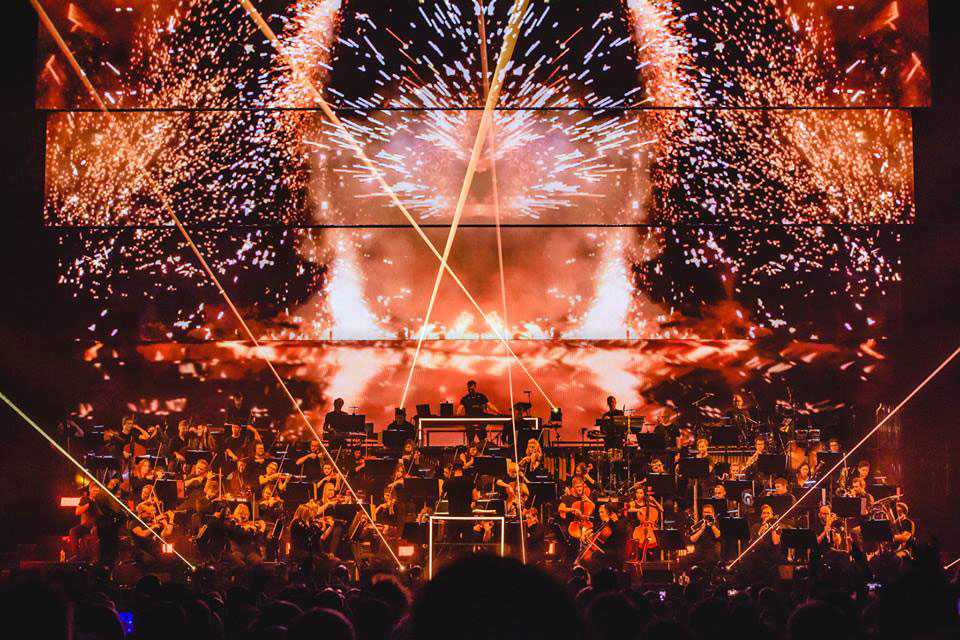Video Design brings Christmas to Ibiza Classics
- Details

“For me, what has made it different this time around is the change of musicians, with different players in the orchestra; their physical technique affects how it looks and feels and consequently where I place the cameras,” explains video director Mark Davies, pointing to one area that has been refreshed. “That’s a subtle distinction but when you get to an instrument the size of a cello posture and playing technique has a big influence.” Paddy Hocken Productions are once again using the services of Video Design to support Davies’ work; they too have been effecting change.
“I’ll give you one small example,” says Davies. “Last time out - and thanks to the intervention of Video Design’s boss Alex Leinster - I was given the chance to use a prototype remote operated tracking camera from BR Remote. Small, discrete and deck mounted, it gave me those all-important dynamic camera angles from across the front of stage without the intrusion of jibs or cranes spoiling the audience’s view. Now, just eight months later they have practically redesigned it.”
Davies is too modest to say so, but part of that process was following feedback from himself and Leinster. “They have produced a completely different form of track, whereas before it was a rail scaff’-clamped to the substructure of the front stage edge, it’s now free standing, a single piece of track sitting on dampened footplates. Smaller, steadier and faster to rig, it’s a much smoother piece of kit. That’s further enhanced by having Sacha Moore, an experienced camera operator to operate all the robo-cams including the BR track downstage. That’s a big call on any individual but having him focused on those cameras has made a big difference.”
Paddy Hocken of Paddy Hocken Productions was especially pleased with the refined nature of the tracking camera. “The standing tickets for the front of stage are very popular; that core audience is important for the atmosphere the show creates. The general direction of this year’s production has been to make the overall look cleaner, the less real estate filled with cameras and operators the closer the audience are to the stage and the greater the vibe; what Alex has given Mark is as low profile as it gets. We have also improved packaging throughout the production: Video Design excel in this area and their new custom projection platforms are small, easy to handle with neat adjustable legs to sit over seating blocks.”
Davies has 20 cameras on the tour, three manually operated front of house and in the pit; the robo-cams and a dozen Marshall minicams, all providing source material for both IMAG projection screens flanking the stage and Kinesys controlled moving LED screens across the back of stage. The complete package is provided by Video Design.
“With the improved technology I was able to respond to the new production immediately, first by changing some mini-cam locations around the orchestra. That’s a plan I continue to refine day by day. It’s not dissimilar to touring with a rock band; you know musically when the cues are coming for solos or important musical flourishes yet how you represent them on screen is very much a sum of artistic interpretation of the visual action placed within the context of the wider dynamic of the show. For an open stage with maybe five rock musicians upon it that’s quite an easy unrestricted opportunity but when you have an orchestra of 60 players then position, angle and framing become critical considerations. With all the improvements Video Design have given me that’s been really good fun. If that wasn’t enough, I’ve even got Luke Collins operating the gx2, what more could I ask for?”


















